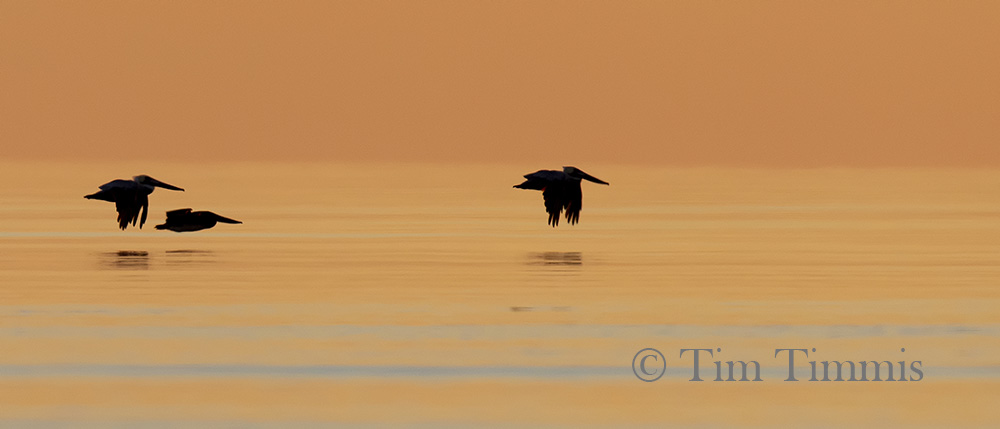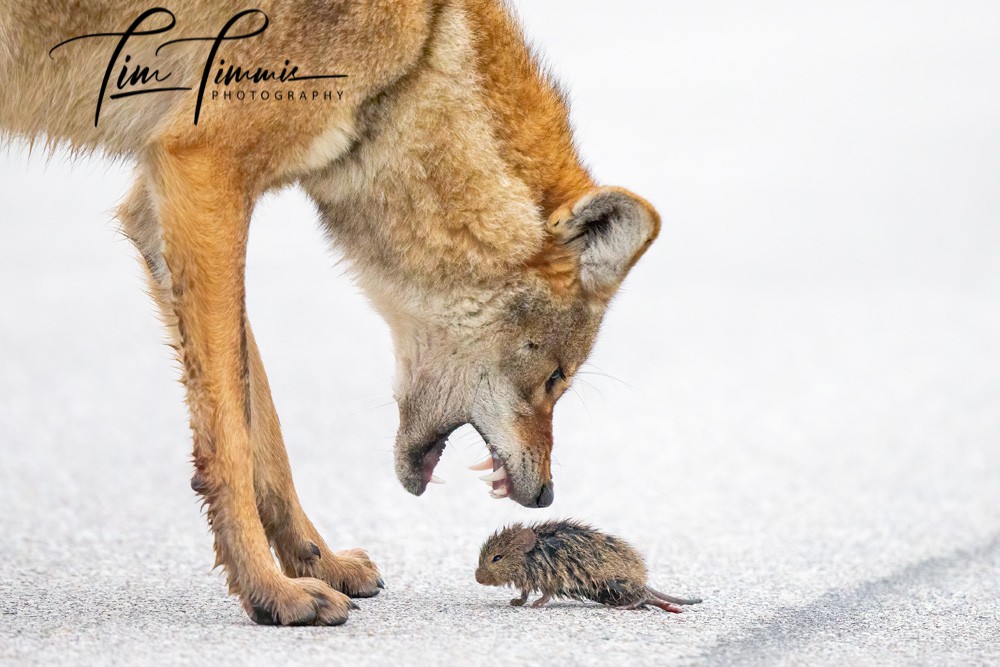Success in Bird Photographer of the Year Contest
Honored to have my favorite willet photo “commended” in the Bird Photographer of the Year international contest in the Birds in Flight Category and published in their 8th edition book. Was very pleased to be in the top 1% of 20,000 photos. Congratulations to all of the winners and those that were published. My first time entering this contest and it paid off. It won’t be my last.
I was notified back in July that this photo was going to be published in their annual photo contest book so ordered one. It showed up last week and it’s a high quality “coffee table” type of book. Would be cool if other contests provided books for their top photos.
Taken with my original Canon 1DX + 500F4 + 1.4x
Nov 2019 at Bolivar Flats Audubon Shorebird Sanctuary, Texas gulf coast
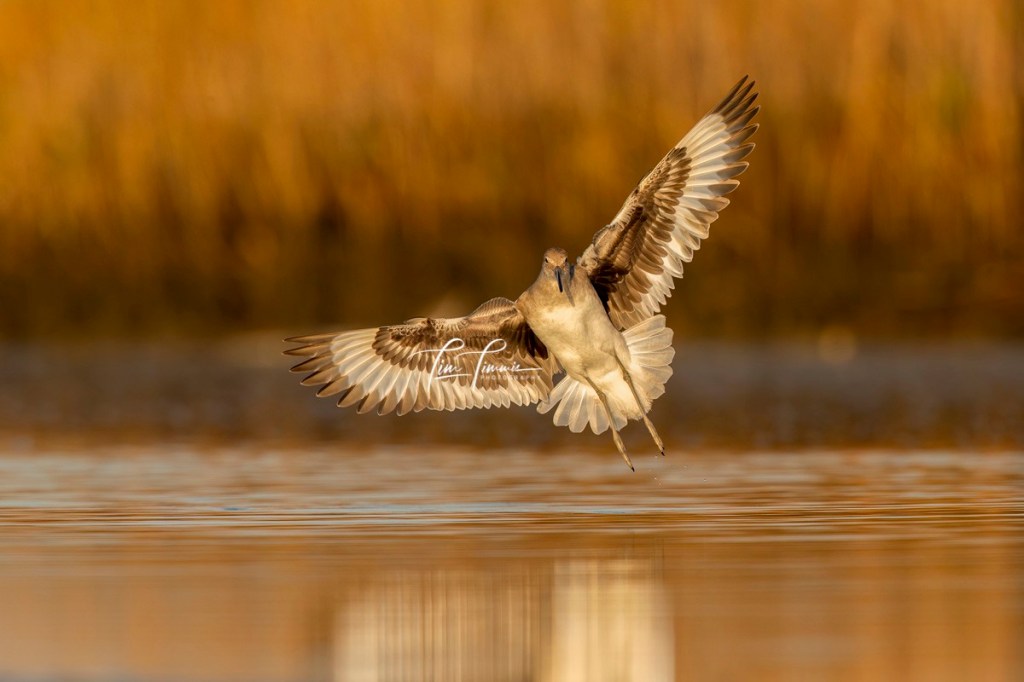


World Bear Day
For “World Bear Day”, here is a coastal brown bear from Alaska, last June. It’s all about the claws.
1/1000 @ F11, ISO 4000, +1 exposure compensation, 700mm (R3 + 500F4 + 1.4X) mounted on Skimmer ground pod. Almost full frame.
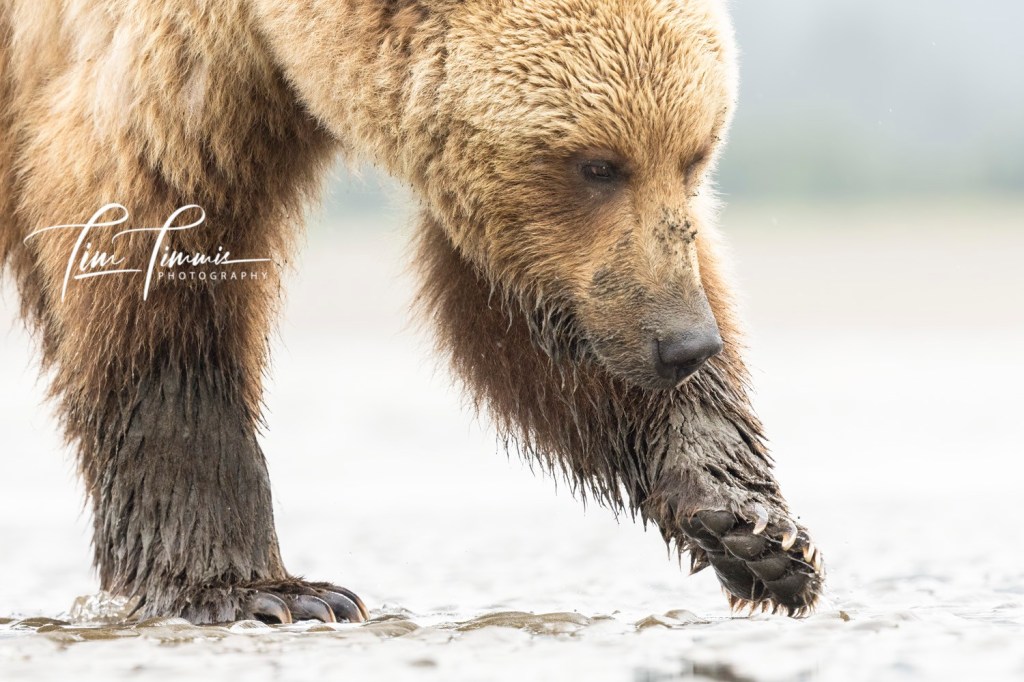
Breaking the Rules
It pays to break the rules sometimes, and in this case, a butt shot paid off. This bear was walking away but I kept shooting as my autofocus stayed on her head. You never know what you may get, and in this case, it’s a very unique perspective showing off the bottom of her foot and claws.
Lying in the wet mud while photographing bears at ground level in Lake Clark Alaska is an incredible experience that continues to fill my soul with pure joy.
1/640 @ F8, ISO 2000, evaluative metering, +1 1/3 exposure compensation, 500mm (R3 + 500F4) mounted on Skimmer ground pod with Wimberley gimbal, cropped
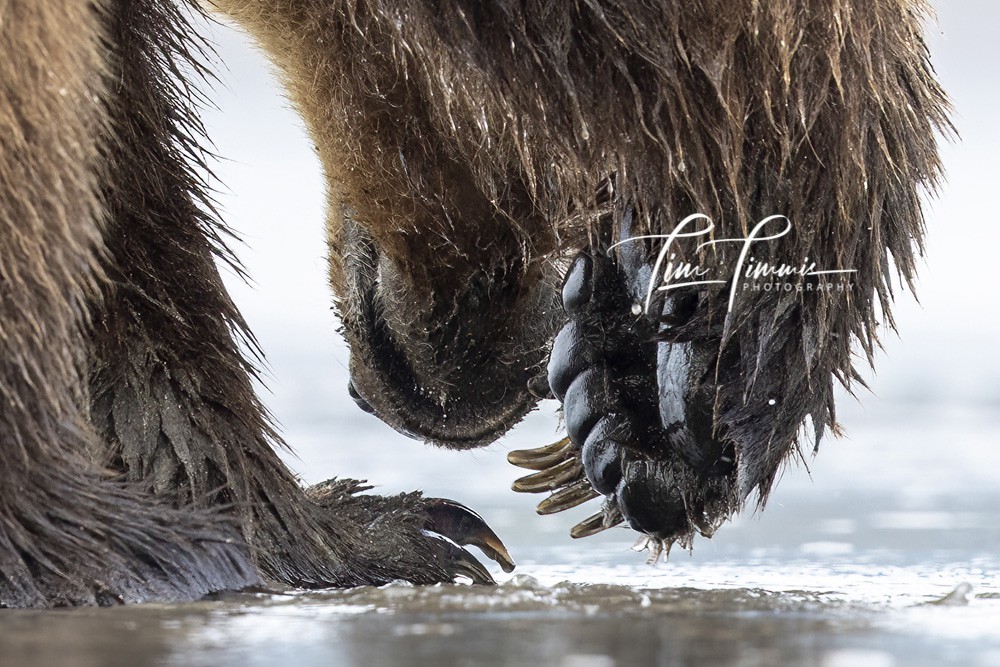
Audubon Top 100 X 2
Honored again this year to make the Top 100 in Audubon’s photo contest with these two photos. Must have been slacking off since I had 4 in the top 100 last year. Congratulations to everyone that won and made the top 100.
First photo is a black skimmer coming in for a landing at Bolivar Flats. I love the unique wing position on this photo as it was one that I’ve never seen before.

This photo is an American avocet riding the surf at Bolivar Flats. Love the water swirling around her neck, which looks like she is getting ready to turn into a Disney princess.

Riding the Wave @ Galveston’s FeatherFest
Took this photo during my first Galveston FeatherFest field trip to Bolivar Flats Audubon Shorebird Sanctuary on the Texas gulf coast. I led four trips to Bolivar Flats again this year in April with this one being challenging with the weather that morning. The wind was blowing at 25 – 30 mph with heavy surf for this area. If it wasn’t for FeatherFest, I typically would have stayed home in those conditions, which makes me wonder how many great photo ops that I’ve missed over the years by not going in adverse conditions. This outing was unique as only one participant, Peggy, showed up for this trip.
In this photo, a group of dunlins and one ruddy turnstone were hanging out on a batch of seaweed that was bobbing up and down with the waves. A small wave came in that made the first dunlin launch up into the air. This group would then feed off of the material that washed up on the mound of seaweed.
I finally made the dive into mirrorless cameras with a Canon R3, which I’ll provide some more information on in a future post.
Taken with Canon R3 with 500mm F4 IS II lens, 1.4X teleconverter mounted on Skimmer ground pod with Wimberley II gimbal head
1/1000 @ F11, ISO 4000, evaluative metering, +1 exposure compensation

Black Wolf in Yellowstone
One of my goals after seeing a black wolf in 2018 was to get a better shot showing their yellow eyes. Mission accomplished from my recent Yellowstone trip.
After he came out of the woods with his mate, he stopped and looked in my direction. Great pose for a full frame uncropped photo.
1/1000 sec @ F7.1, ISO 400, manual mode, 700mm, handheld while sitting in a snowbank
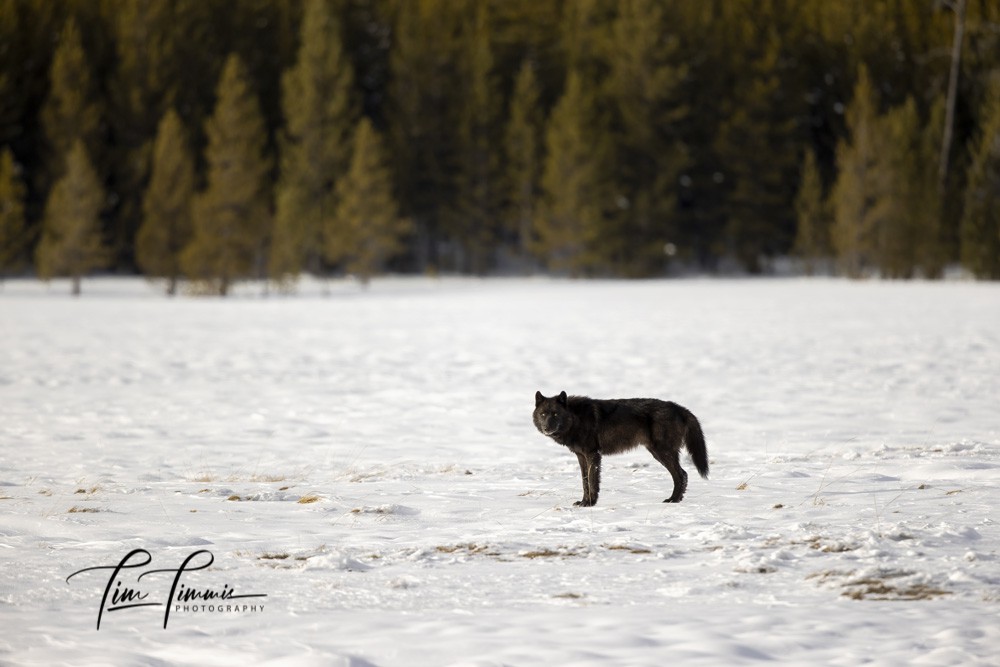
He walked to our left and then made his way closer. In this photo, he had just turned his body slightly towards us and looked at me again with his right leg in motion for just the photo op that I was hoping for. He only looked at me for 2 seconds but was able to get a few shots off. The eyes have it!

Frosty Bison
Got home yesterday from a trip to Yellowstone with 7 days of shooting in the park. Spend 3 days in a snow coach from West Yellowstone and 4 days driving on the northern range from Gardiner. It’s always a great time to be in Yellowstone in the winter. The animal activity was slower than normal this year likely due to the lower snow pack in the park but still had some great photo ops with wolves, moose, bison, coyotes, bald eagles and a large herd of big horned sheep.
Used manual mode while shooting in the snow. Only used my tripod once since it is much easier to use a Black Rapid strap for my 500mm lens when bailing out of the vehicle for some fast-moving action shots.
Found this frosty bison close to the road as he was using his head to push away the snow to get to the grass in -16 deg F temperatures. Was hoping for colder weather for more frost.
1/640 sec @ F7.1, ISO 2500, manual mode, 700mm, handheld

Avocet Gliding
American avocet gliding along after sunrise on Texas gulf coast this morning. Sunrise was amazing with the cloud formations and red light. The sun eventually popped out of the clouds providing some good light. Ended up leaving when the sun went behind the clouds as I’m not a fan of flat light.
1/2000 sec @ F9, ISO 3200, evaluative metering, -2/3 exposure compensation, 700mm from Skimmer ground pod, minor cropping
Taken with Canon 1DX III, Canon 500mm F4 IS II with 1.4X III teleconverter mounted on Skimmer ground pod with Wimberley II gimbal head
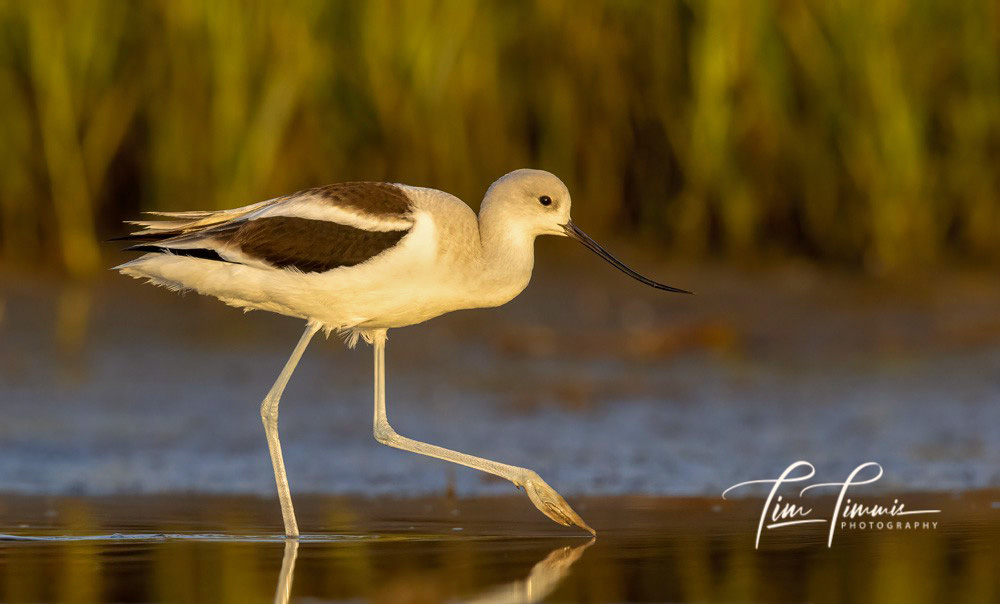
Water Explosion Frozen in Time
Reddish egret diving for fish in a tidal pond at Bolivar Flats Audubon Shorebird Sanctuary. While heading back to my car after a successful early morning taking shorebird photos, found this reddish egret that was catching some small fish in a separate small tidal pool. Got some very cool splash shots but didn’t like the background so converted this one to B&W and cropped in on the splash.
1/1250 @ F10, ISO 1600, evaluative metering, +2/3 exposure compensation, 700mm from ground pod
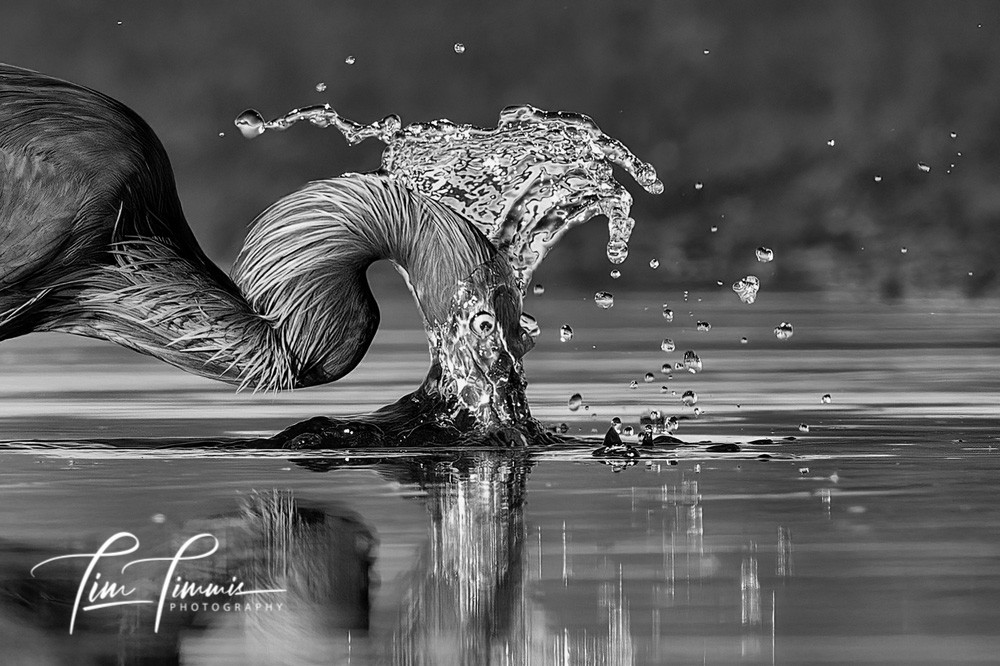
Grand Slam in 2021 Audubon Top 100
Four of my photos made the top 100 this year in Audubon’s 2021 photo contest. Although 2020 was a very challenging year from a pandemic perspective, it challenged me to get out an shoot more with over 60 local field trips, which paid off in the Audubon contest.
Great egret in silhouette through her breeding plumage from High Island TX rookery
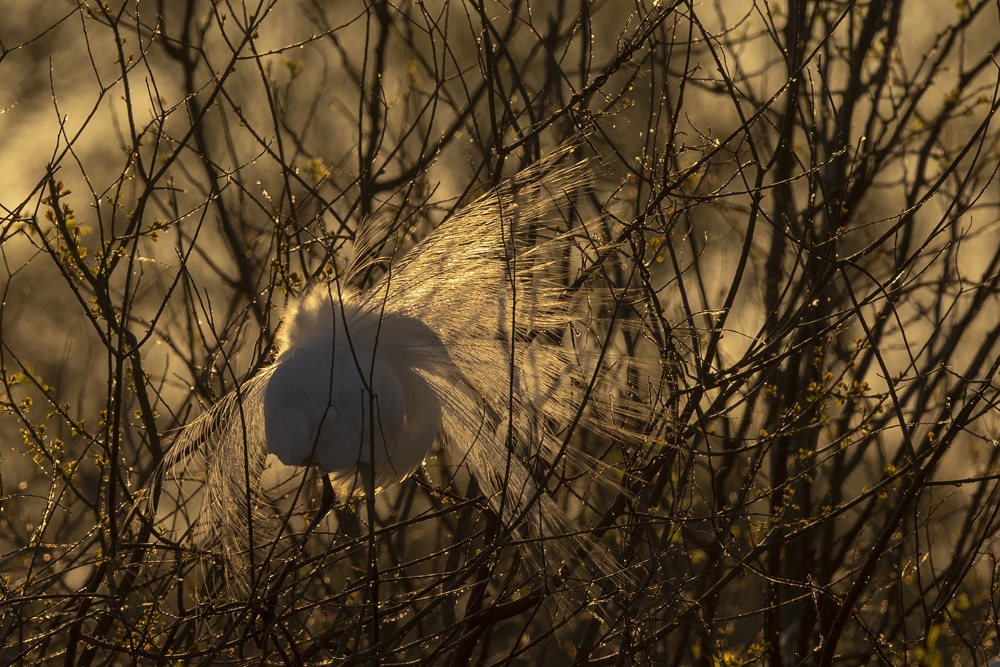
White moph reddish egret spreading its wings just after landing at Bolivar Flats Audubon Shorebird Sanctuary last summer.

Two lesser yellowlegs running in unison at Bolivar Flats Audubon Shorebird Sanctuary.

American avocets at Bolivar Flats Audubon Shorebird Sanctuary.

Alaskan Coastal Brown Bears
Made my first trip to Alaska last week and spent some quality time with the bears at Lake Clark National Park, which was an incredible experience. Took my waders & ground pod with me as they have a mudflats so got down low and up personal with the bears, especially the cub.
In this photo, mom was standing to look over the tall grass to check for male bears, which will kill the cubs. She lost 2 cubs last year. This cub is about 1 ½ yrs old.
1/1600 sec @ F13, ISO 2500, evaluative metering, -1/3 exposure compensation, 560mm, handheld, Canon 100-400 with 1.4X, full frame with no cropping

Drop in a Splash – Expensive Outing
American Avocet at Bolivar Flats Audubon Shorebird Sanctuary
When using a high shutter speed, sometimes the splash is more interesting than the shorebird. I always start shooting when their head starts going towards the water as you never know what you may capture. In this case, the frozen splash also shows a cool water drop.
As mentioned in my previous post about becoming “one with the flock”, my 1DXIII camera got wet from the salt water lapping at the bottom of my camera after the tide came in while I way laying on my stomach with shooting from my ground pod. After that outing, had some issues with my fully charged camera batteries being fully discharged before I took one shot with them. Would put another battery in and it worked fine.
Sent my camera to Canon to have them check it out. My salt water encounter ended up costing me a $1,200 repair bill. Canon described the issue as: “The bottom multi-controller on the back cover is stuck and will not move. At this time the PCB ASS’Y, MAIN W/LI BATT and COVER ASS’Y, BACK will be replaced.” Apparently, it got dunked a little more than I thought in the salt water.
Will it make me think twice about doing it again next time? Nope.
1/2000 @ F11, ISO 2000, evaluative metering, -1/3 exposure compensation, 700mm (500+1.4X) from ground pod, minor cropping

One With the Flock
Have to share some details and photos about my unique adventure on Sunday (3/7/21) at Bolivar Flats Audubon Shorebird Sanctuary on the Texas gulf coast in search of American Avocets. Needless to say, I found just a few.
While walking along the beach as the sun came up, there were a couple of flocks of avocets off shore but they wouldn’t have been worth the effort to photograph so decided to keep going to see what was around the corner. Found a group of white pelicans with some avocets feeding around them. Took the first photo with handholding my rig with ground pod/Wimberley head attached while deciding where to lay down.

The avocets were working their way to my right but couldn’t get upstream without spooking them so decided to lay down in the opposite direction in anticipation that they would eventually move that way. Laid down at the water’s edge of a sandbar and focused on flight shots as more and more avocets were coming in to join what soon became a feeding frenzy.

The enlarging flock eventually reversed course and headed in my direction. During that time, the tide was starting to come in and my sandbar ended up under water and I felt water getting into my waders. At 53 deg F air temp, 15 to 20 mph winds and 59 deg water temperature, it got really cold really fast. Tried to back up a few feet to find dry ground but looked behind me and there was no sandbar in site for over 50 ft.
With a flock of several hundred avocets heading my way, had to make the decision to get up to save my frozen body parts or grin and bare it. As my ground pod filled with water, figured that it couldn’t get much worse so stayed put as the flock was nearly upon me. When avocets feed, they put their head in the water and use their long bills to rake across the sand to find invertebrates. They just kept feeding and getting closer and closer.
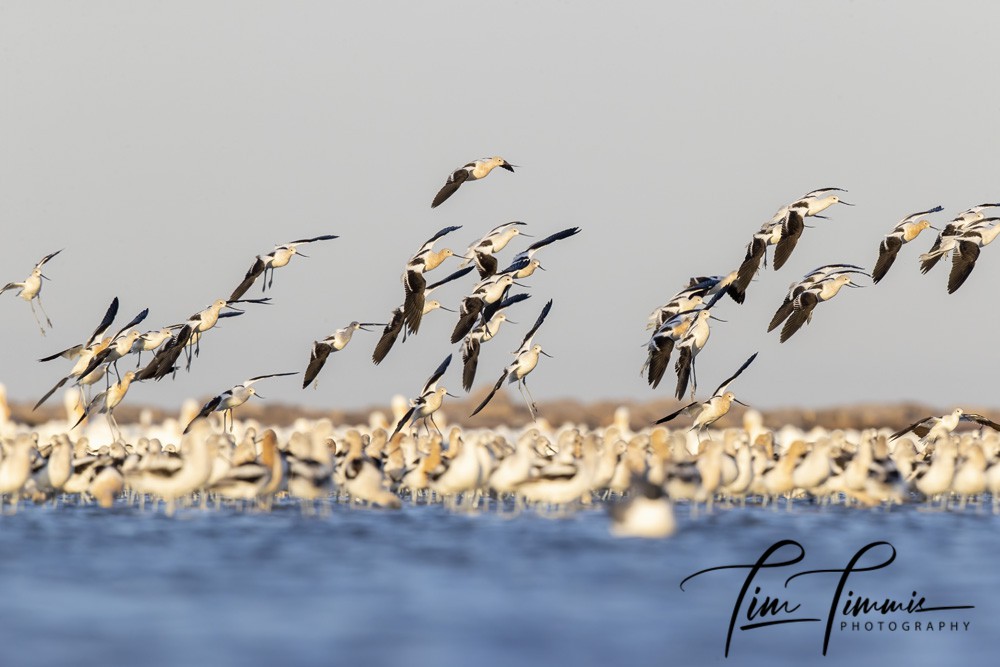
Eventually they were within 20 ft of me and just moved around me and kept feeding. Was very cool to be surrounded 360 deg. by one of my favorite birds. Don’t know if it helped but I was in full camo with the hood of my sweatshirt pulled over my head. One of the major advantages of photography using a ground pod is that the birds don’t recognize you as a person.
At this point, I became “one with the flock”, which was an amazing experience. I’ve had avocets all around me before but it was a handful, not a full flock. Got a couple of photos that may be photo contest worthy but would have loved this experience if I didn’t get any photos.

It was challenging to photograph them that close as I couldn’t shift my position without moving too much in fear of spooking them. Eventually switched to F16 for more depth of field but it didn’t help much at that distance. The white pelicans also joined the fray and flew about 10 ft over me with one landing very close. Slowly rotated my ground pod around to get a couple of shots of him.

Was so focused and in the zone that I didn’t realize my ground pod was floating in the water and had shifted so that the back end was down into the sand under the water with the front end up resting on the bottom of my 500mm lens. With my gimbal head adjustments being loose for shooting, it just floated up in the water. Pulled it back down and locked it into place for a few seconds to stabilize it when I realized that the salt water was lapping at the bottom of my camera. Shifted the camera up slightly to get it out of the water and then my lens raincoat was in the water.
Didn’t take a rocket scientist to say it was time to get up quickly, which was easier said than done with my waders/clothing full of water and my desire to not dunk my gear. Usually grab the base of my ground pod to help get up but in this case, didn’t want to move/splash my camera/lens so got up next to my gear as water poured out of my jacket. Slowly made my way back to my car while water was squishing in my wader boots. Water just poured out of my waders when taking them off. Removed my camera raincoat and put my camera in the passenger seat for the drive back to the ferry.
After getting on the ferry, noticed that there was water dripping out of my lens hood. Removed the hood and saw that the bottom part had been in the water. Took off the Lenscoat neoprene covers on my lens to dry it off. Took a couple of hours to clean up myself and my gear but was well worth it.
All photos were taken with Canon 1DXIII, Canon 500mm F4 IS II with 1.4X III, Skimmer ground pod (now a designated floaty) with Wimberley II gimbal head.

Bald Eagle from Anahuac NWR
Found this bald eagle at Anahuac NWR in Texas on 12/5/20. Was driving around a corner and spotted a very large bird sitting on a fence post. Initial thought that is was a turkey vulture as they are in abundance out there. Second thought was that it was too big for a vulture and then saw the white head. Bingo – bald eagle. Turned my car to the right to get an angle on him where I could take a photo out of my car window. The sun was right behind him getting higher in the sky resulting in a challenging exposure. Kept checking my histogram and was blowing out the sky at times which is not a major concern as the bird was my subject. Just wanted to make sure that I wasn’t blowing out the whites on his head.
Took several shots and was moving my car to get a better position what I heard another vehicle approaching on the dirt road. Pulled off of the road and then a pick-up truck came flying by. He had no clue that there was an eagle there and almost hit him when he spooked from his perch.
Ended up finding him a couple more times before I left but this was my best photo. Always very cool to see an eagle out at Anahuac. First time that I had one posing for me.
Found that he as a bad eye when reviewing my photos on the computer. His left eye is gray in color.
1/3200 @ F9, ISO 2500, evaluative metering, + 1 2/3 exposure compensation, 700mm, handheld out my car window
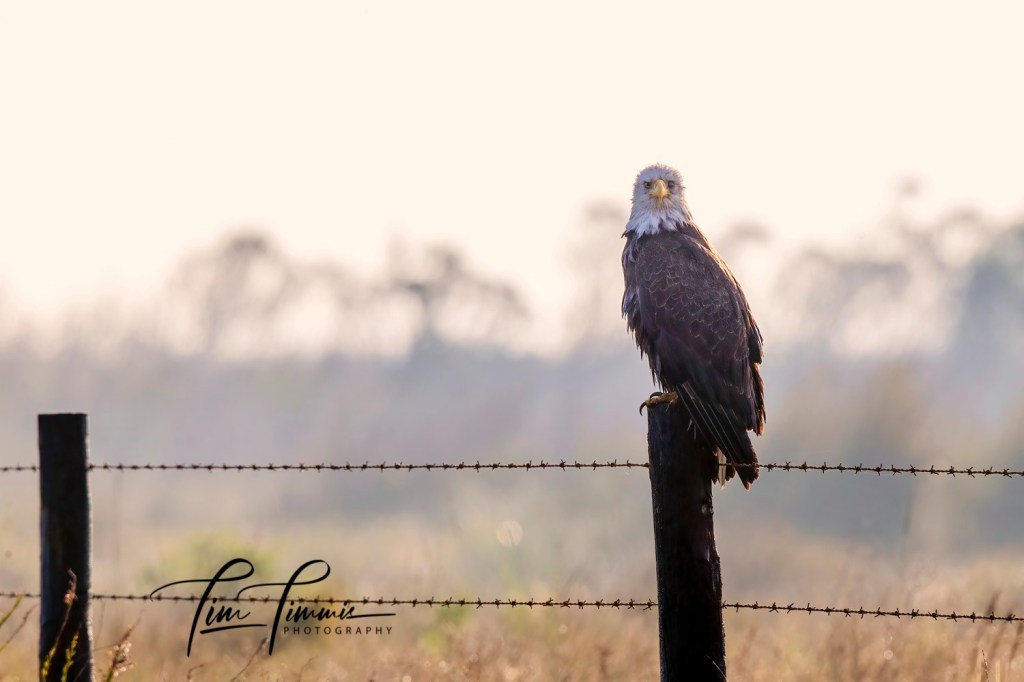
Magnificent Frigatebird
Paying attention to bird behavior really paid off on Friday morning. Was taking photos of a reddish egret when he started looking up in the air. Reddish egrets don’t usually pay attention to other birds in the sky unless it’s another reddish egret. This one kept glancing to the sky which peaked my couriosity so I decided to look up from my prone position and got a fantastic surprise when this magnificent frigatebird was right above me.
Decided to quickly take my camera off of the ground pod and rolled onto my back and started shooting straight up in the air. The wet sand in my hair was a new experience but well worth it. She was almost too close as I was clipping wings off of the frame. Got a few shots from that position but it was too difficult to control my 500mm lens so rolled over and sat up to shoot. Didn’t want to stand up and potentially spook her. She kept circling me and I wondered if she was checking me out, which I confirmed was the case after looking at the photos on the computer.
Magnificent frigatebirds are huge with a 7 ft wingspan and a forked tail. Have seen them at the east end of Galveston Island and while in my car on the ferry several years ago but never at the flats. Getting that close was a major bucket list event for me. Was thinking about frigatebirds a few weeks ago while on the ferry and envisioned having a close-up encounter. I need to start dreaming about birds more often…


Bolivar Flats Trip
Happy Thanksgiving everyone! Hope that you have a great day and get plenty of food to eat.
Had a great couple of days taking shorebird photos this week at Bolivar Flats on the Texas gulf coast. Went with Lisa and Catherine on Sunday and by myself on Monday with sunshine and low winds.
On Sunday, we found a good spot to lay down with our ground pods and a huge flock of avocets made their way in our direction. Was able to turn to my left to get some back-lit shots, which if always my goal with bird photography.
1/2500 sec @ F8, ISO 800, evaluative metering, +2/3 exposure compensation

We moved locations and the avocets were walking right in front of us. They were so close that I couldn’t get some of them in the frame. A very good problem to have. This is one of the main advantages of using a ground pod as the birds don’t recognize you as a person when you are laying down. They will walk right up to you.
1/2500 sec @ F10, ISO 800, evaluative metering, no exposure compensation

Also got this shot that I really like of a dowitcher as he fed in front of us. It pays to watch all of the birds as the small ones can provide some great photo op’s.
1/1600 sec @ F6.3, ISO 800, evaluative metering, + 1 1/3 exposure compensation

A highlight on this trip was this lone black-necked stilt that was walking amongst the hundred of avocets. It was a challenge to get him isolated from the rest of the birds but was able to get a few shots. Love their long legs, tux looking feathers and red eyes.
1/2000 sec @ F10, ISO 800, evaluative metering, no exposure compensation
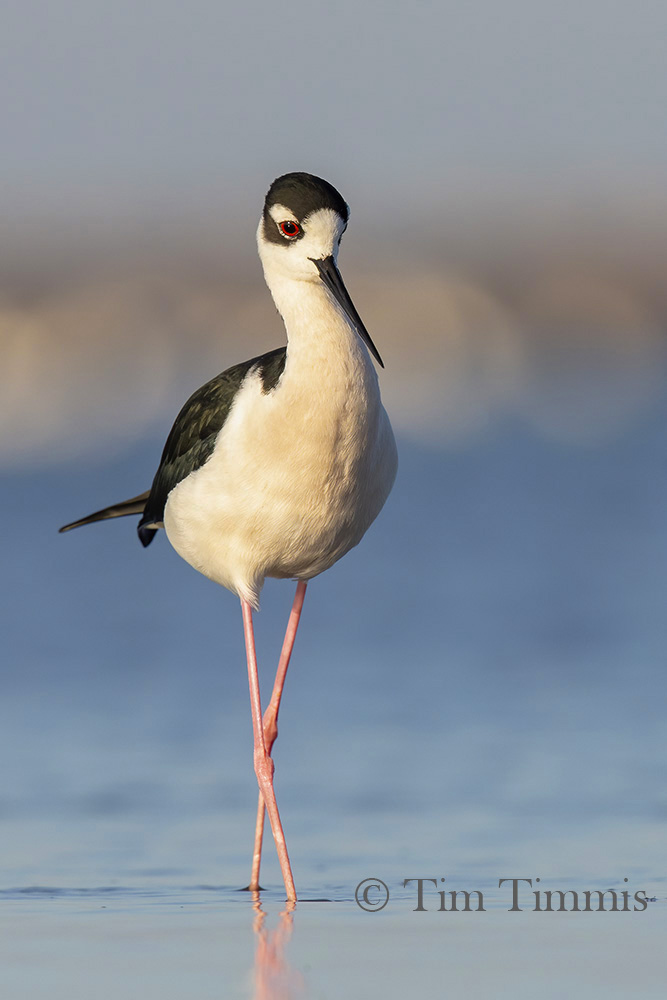
White Morph with Wings Up
The reddish egrets have been out in full force lately at Bolivar Flats on the Texas Gulf Coast. This beauty was chasing fish around with his wings extended, as reddish egrets are known for. Always a good time to watch these birds dance around while fishing. They are very fast and a high shutter speed is highly recommended.
Taken with Canon 1DX and Canon 500mm F4 IS II with 1.4X III teleconverter mounted on Skimmer ground pod with Wimberley II gimbal head
1/3200 sec @ F5.6, ISO 800, evaluative metering, + 1/3 exposure compensation
1/3200 sec @ F5.6, ISO 800, evaluative metering, + 1/3 exposure compensation
White Morph Reddish Egret
Spent some quality time on July 4th at Bolivar Flats along the Gulf Coast taking photos of reddish egrets at high tide. They weren’t as active as my previous trip but they finally came out to play as we were ending our morning trip. I’m not a major fan of taking photos at the beach with cloudy skies but it was still fun.
Taken with Canon 1DX and Canon 500mm F4 IS II with 1.4X III teleconverter mounted on Skimmer ground pod with Wimberley II gimbal head
1/1600 sec @ F7.1, ISO 1600, +2 exposure compensation

Reddish Egret – Wings Up
Reddish Egret raising his wings while fishing. They are the best egret at catching fish in my opinion. Always fun to watch them dance around.
Taken with Canon 1DX and Canon 500mm F4 IS II with 1.4X III teleconverter, mounted on Skimmer ground pod with Wimberley II gimbal head
1/640 sec @ F9, ISO 800, evaluative metering, + 1 2/3 exposure compensation

American Avocets
Mentioned to my FeatherFest group before we hit the beach on Saturday morning that one of my target birds for this field trip was avocets. Score!
Low tide turned into high tide with the winds from the south due to the storm system. The high tide drove all of the birds near the shoreline and luckily most of them were along the beach facing south before you go around the bend. We started with a small group of avocets and worked our way down the beach until we hit the jackpot with thousands of them that just kept flying into the same area.
The legs have it in this full frame shot from my ground pod with only cropping to pano format. If you look close, had some light rain going on at this time. Also a photo bomber flying in.
Taken with Canon 1DX and Canon 500mm F4 IS II with 1.4XIII teleconverter mounted on Skimmer ground pod with Wimberley II gimbal head.
1/200 sec @ F 5.6, ISO 800, evaluative metering, +1 exposure compensation, aperture priority, 700mm
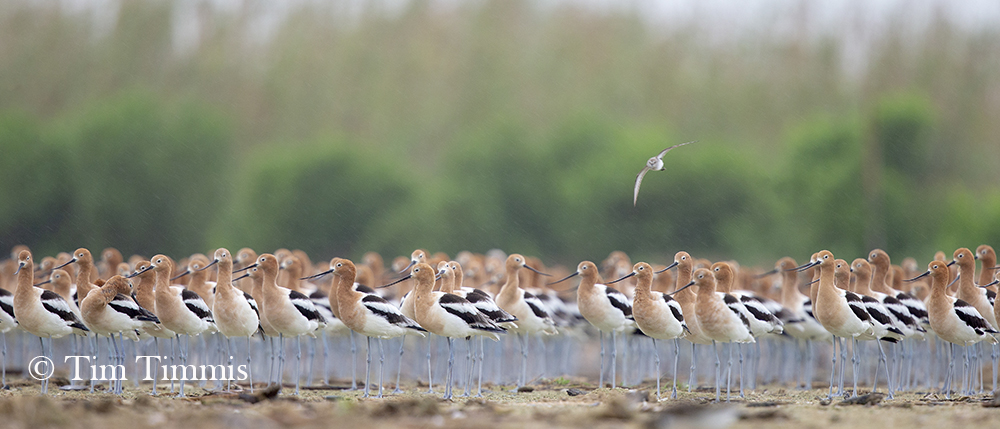
Short-eared Owl
There have been lots of posts on Facebook about some short-eared owls hanging out at Anahuac National Wildlife Refuge in SE Texas. Made a trip over there recently to check them out. Took a couple of trips to finally find them and it was a blast. Ended up spending about 1 1/2 hours watching them fly back and forth hunting over a large area. Most of the photos were at a long distance away but they did make a few close passes, which were very exciting.
Taken with Canon 1DX and Canon 500mm F4 IS II with 1.4X III teleconverter mounted on tripod with Wimberley II gimbal head.
1/2000 sec @ F6.3, ISO 800, evaluative metering, +1 exposure compensation

Back to the Gulf
Sometimes the stars align (no wind, no waves, low tide) along the Gulf of Mexico and the waters are very calm at Bolivar Flats, which makes for some amazing conditions for shore bird photography. This happened on Friday when I took some vacation time to get back to Bolivar for the first time in 4 months.
Got very excited when driving onto the beach while seeing the calm water. This happens maybe once a year if you are lucky, from my experience. Pulled up to the parking area on the beach with nobody else in site and quickly geared up before the sun came up. It was 41 deg F and my neoprene waders felt nice and toasty.
Found a small group of American Avocets along the shoreline and laid down with my ground pod for some silhouette shots. Also had some photo op’s further out in the water with pelicans and black skimmers flying by. The sun popped up which led to some interesting photo op’s with the changing light.
Got up from my initial position and turned to my right just in time to see a peregrine falcon taking off from the beach. Wish that I had seen him earlier but he was very skittish and getting close to him would have been very challenging. Was able to get some flight shots as he flew by, which is always fun with hand holding a 500mm lens attached to a ground pod with a Wimberley gimbal head.
Moved offshore onto some sandbars to take photos of willets, long billed curlews, more avocets and hundreds of black skimmers that would periodically blast off and fill the sky. On the way back to my car, a reddish egret landed right behind me so got back down on the sand for some very close-up shots which was a great wrap up to a wonderful morning.
Needless to say, it was great to be back at Bolivar in perfect conditions.
Taken with Canon 1DX and Canon 500mm F4 IS II and 1.4X III mounted on a Skimmer ground pod with Wimberley II gimbal head.
1/1600 sec @ F8, ISO 1600, evaluative metering, +1 exposure compensation
